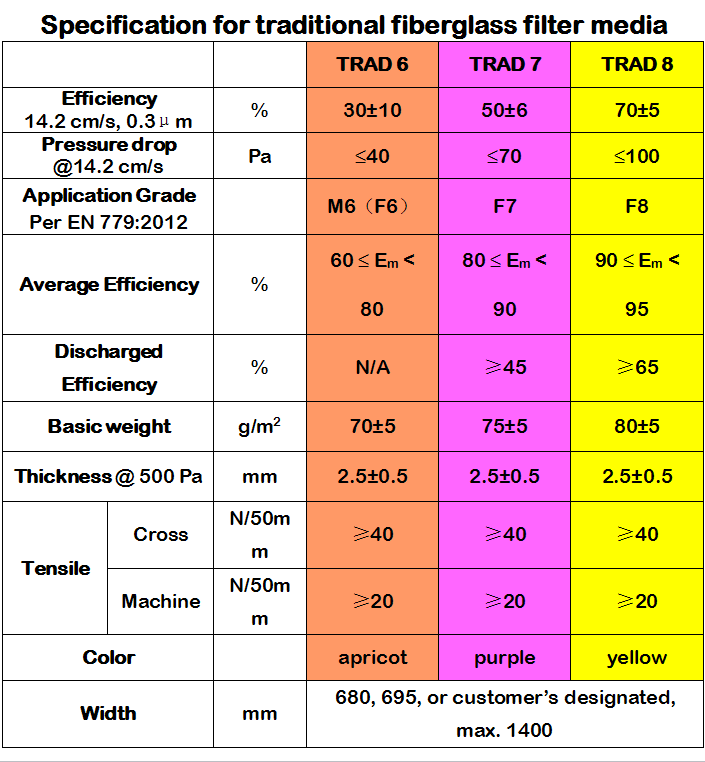To meet customers’ needs, 4G manufactures traditional fiberglass media for ventilation bag filers.
Compared with similar materials mode elsewhere, TRAD has the following advantages and disadvantages:
Advantage — Formaldehyde-free
Our competitors use formaldehyde based binders in fiberglass media. Such glues may have a danger in outgassing formaldehyde. Binders used by 4G contains and outgas hardly any formaldehyde.
Advantage — Withstand server conditions
Ordinary fiberglass may degrade in contact with water vapor and carbon dioxide. Parts of this reason, some manufactures may suggest a short shelf life. 4G’s media use special glass that hardly degrade in any possible environments that filters may experience.
Disadvantage — Less competition
Customers love to squeeze a list of suppliers to get good quality products with a good price. Unfortunately, it is not the case when they try to source fiberglass media for pocket filters. Including the new comer 4G, there are probably only four manufactures.
Arguments — Fiberglass vs Synthetics
There have been bitterly fighting between fiberglass and synthetics for the past 30 years. In general, charged synthetic filter media are less expansive. In competitions for duct-holding capacity and the stability of filter performance, however, fiberglass usually win.
4G makes fiberglass. Thus we talk good parts of fiberglass. Others may not agree with. Like or dislike, when customers have to test filters with EN 779:2012 or new ISO proposals, they may have to pay an eye at fiberglass.


Efficiency and pressure drop are tested at 85 L/dm2/min. Other test parameters can be applied according customers’ specification.
Application grade refers to the filter classification per EN779:2012. It should be noted that commonly designed filters will march such an ‘application grade’ in lab testing, while some uncommon designs and uncommon test conditions may give a lower or upper grade.
Test Average Efficiency refers to the average efficiency during loading test per EN 779:2012 or Chinese CRAA432.1-2008.
Discharged Efficiency is a criterion specified by EN779:2012. It is an efficiency after discharge, minimum 35% for F7 filter and 55% for F8. M6 filters do not require any discharge test.
Thickness is merely for production control. Different pressure when measuring will give different thickness.
Color gives standard colors. 4G can provide media with customer designated colors.
In manufacturing bag filters, a special designed stitching machine is needed. To help customers who do not have a stitching machine, 4G can provide ready stitched filter bags.
4G promised that it only makes filter media, no any assembled filter, i.e. never competing with customers.

